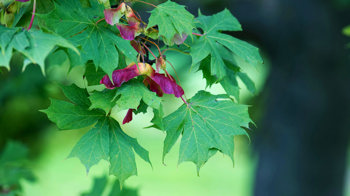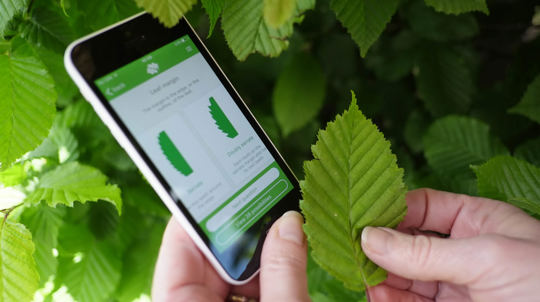
Credit: Nature Photographers Ltd / WTML
Leaves
Opposite, simple, broad and three-lobed with coarse, serrated edges and sparse fine hairs on the underside. They are 5–10cm long, with a rounded base and coarsely serrated margins. In spring, the leaves are green, and they change to orange-yellow or red in autumn.



















